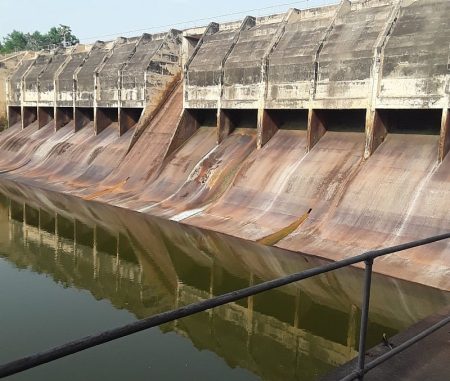The residents of Ashaiman, specifically those in Bethlehem and Golf City, experienced a frightening episode of suspected chlorine exposure on the night of Friday, April 11, 2025. The source of the chemical release appeared to be the Central Ghana Water Company warehouse located in the area. Between 7:00 p.m. and midnight, the air became thick with a strong chemical odor, causing widespread respiratory distress. Residents reported breathing difficulties, and individuals with asthma suffered attacks due to the severity of the air contamination. This incident prompted immediate concern and fear among the affected communities, highlighting the potential dangers of chemical storage and the importance of robust safety protocols.
The timing of the incident, during the evening hours, amplified its impact on the residents. Many were at home, preparing for the night or already asleep, when the chlorine-like odor began to permeate their homes. The inability to escape the contaminated air contributed to the panic and distress experienced by the community. The sudden onset of respiratory issues, ranging from simple breathing difficulties to severe asthma attacks, underscored the potentially harmful and even life-threatening consequences of such chemical exposures. The incident served as a stark reminder of the vulnerability of residential areas located near industrial or storage facilities handling hazardous materials.
Eyewitness accounts painted a vivid picture of the night’s events. Eric Sonny, speaking to Citi FM, described the pervasive nature of the chemical smell, its effect on the residents’ ability to breathe, and the particular vulnerability of those with asthma. His description of a “burning sensation” further emphasizes the irritating and potentially corrosive nature of the suspected chlorine gas. His plea for immediate intervention by the authorities highlighted the urgency of the situation and the fear that gripped the community. The fact that the situation seemed to normalize by Saturday morning, while providing some relief, did not diminish the seriousness of the incident and the need for a thorough investigation.
The suspected chlorine spill raises serious questions about the safety protocols and emergency response measures in place at the Ghana Water Company warehouse. The incident suggests a potential failure in containment or handling procedures that allowed the chlorine to escape into the surrounding residential areas. The lack of immediate public notification or instructions from the company further exacerbated the situation, leaving residents feeling vulnerable and uncertain about how to protect themselves. The incident underscores the need for stringent regulations and regular inspections of facilities handling hazardous materials to prevent such occurrences and protect public health and safety.
This incident in Ashaiman highlights the broader issue of environmental safety and the potential risks associated with industrial activity located near residential areas. The fear and health concerns experienced by the residents underscore the importance of proactive measures to minimize such risks. This includes robust safety protocols within industrial facilities, effective emergency response plans, transparent communication with surrounding communities, and regular environmental monitoring to ensure compliance with safety standards. Further investigation into this incident is crucial not only to determine the precise cause and prevent future occurrences but also to build trust between industrial operators and the communities they operate within.
The aftermath of this incident necessitates a thorough assessment of the damage caused by the suspected chlorine exposure. This includes evaluating the health impacts on residents, particularly those who experienced severe respiratory distress or asthma attacks. Long-term health monitoring may be necessary to determine the full extent of the exposure’s effects. Furthermore, a comprehensive investigation into the incident is essential to identify the root cause, determine accountability, and implement corrective measures to prevent future occurrences. This incident should also serve as a catalyst for strengthening environmental regulations and safety protocols related to the storage and handling of hazardous materials, particularly in areas located near residential communities. The safety and well-being of the residents must be prioritized, and measures must be taken to ensure that such incidents do not occur again.














